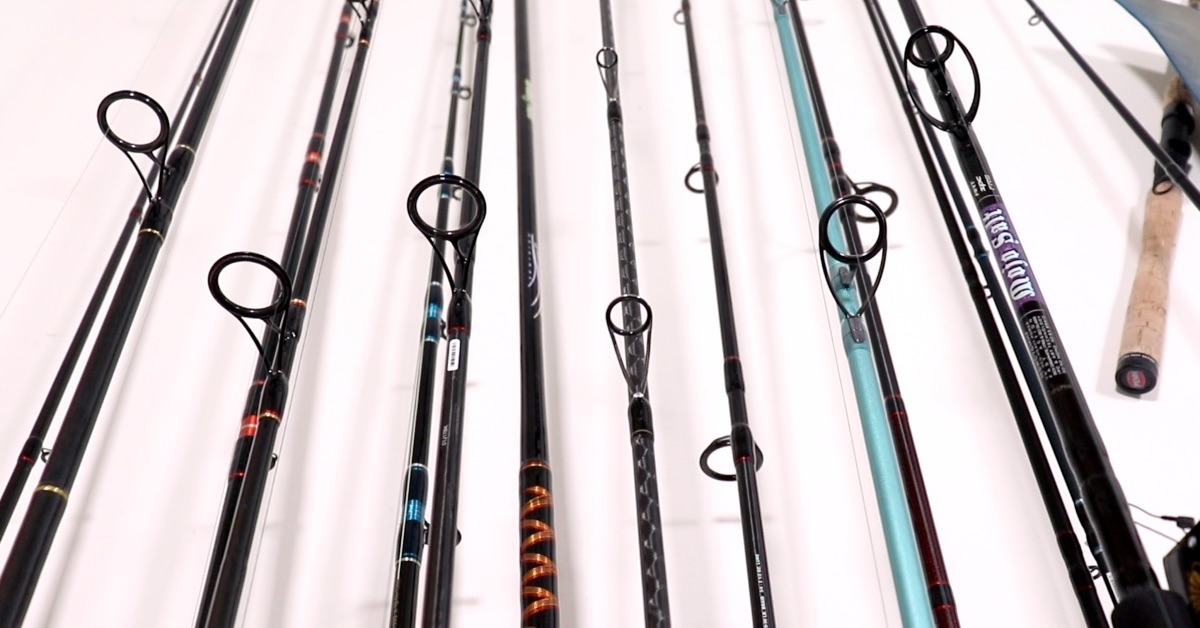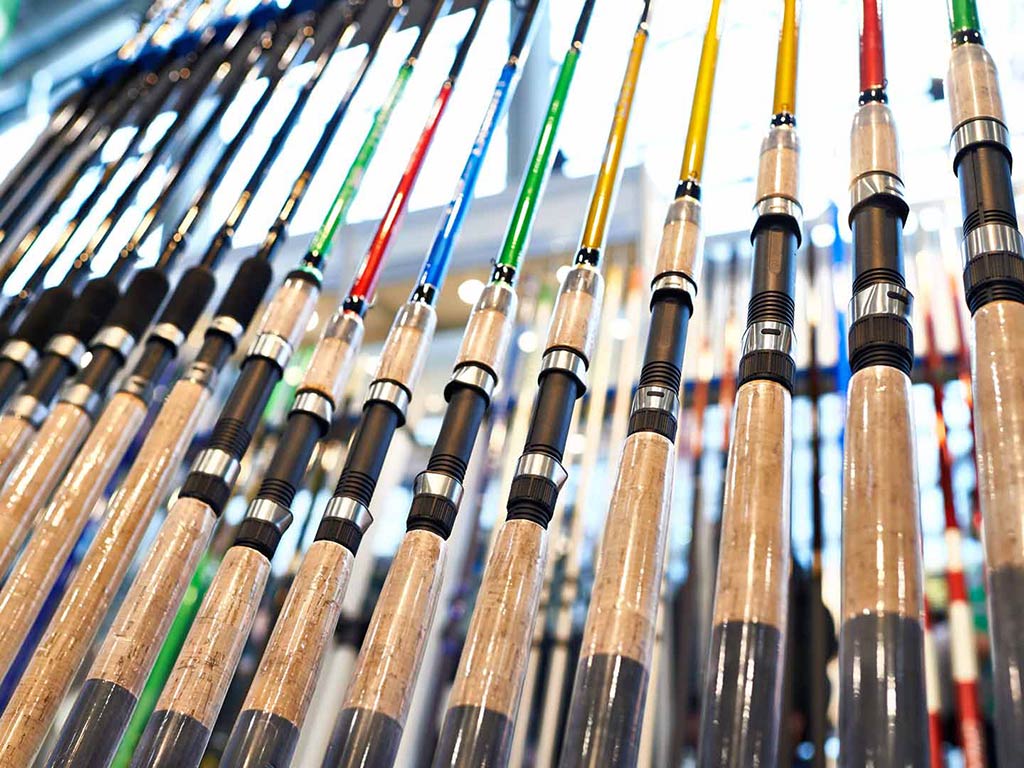Selecting the appropriate size and weight for your fishing gear is essential for optimizing your fishing experience and increasing your chances of success. Here are some detailed tips to help you make informed decisions based on the fish species and techniques you plan to use.
Matching Rod Power to the Dance of the Catch
The “rod power” refers to the amount of force a rod can exert when bent. Selecting the right power ensures you have the necessary leverage to handle the specific fish you’re targeting. Here’s a breakdown for different fish species:
- Small Freshwater Champions (Panfish, Trout):
- Rod Power: Ultra-light to light.
- Line Weight: 2-6 lbs.
- Techniques: Light tackle and finesse techniques like fly fishing or ultralight spinning.
- Tips: Delicacy is key. Lighter gear enhances sensitivity, allowing you to feel the subtle nibbles of these smaller fish. Additionally, it avoids spooking them with aggressive presentations.
- Medium Freshwater Contenders (Bass, Walleye):
- Rod Power: Medium.
- Line Weight: 8-12 lbs.
- Techniques: Spinnerbaits, crankbaits, and soft plastics are popular choices for these versatile predators.
- Tips: Finding a balance is crucial. Medium power rods offer the necessary backbone for handling these fish while maintaining the flexibility for casting a variety of lures and employing various techniques.
- Freshwater Goliaths (Pike, Muskie):
- Rod Power: Heavy.
- Line Weight: 15 lbs and above.
- Techniques: Large swimbaits, jerkbaits, and heavy jigs are used to entice these apex predators.
- Tips: Brute force is a necessity. Heavy rods are built to withstand the aggressive strikes and powerful runs of these large fish. Don’t underestimate their strength!

- Saltwater Titans (Redfish, Snook, Tarpon):
- Rod Power: Medium to heavy.
- Line Weight: 20 lbs and above.
- Techniques: Surf fishing, bottom fishing, and trolling are common techniques for saltwater species.
- Tips: Durability is essential. Saltwater environments are harsh, and the fish themselves are powerful. Robust gear ensures your equipment can withstand the challenges of the sea.
Fine-Tuning Your Approach: Technique-Specific Recommendations
Beyond the target species, the chosen fishing technique also plays a role in selecting the right gear size and weight. Here are some specific considerations:
- Fly Fishing:
- Gear: Fly rods come in various weights, typically ranging from 4-6 for trout and 8-12 for larger saltwater species.
- Tips: Matching the rod weight to the target species and the size of the flies you’ll be using is crucial for optimal casting and presentation.
- Trolling:
- Gear: Heavy lines (20 lbs or more) and robust rods are essential for trolling.
- Tips: Trolling involves constant pressure as lures are dragged behind a moving boat. Trolling rods need to withstand this strain and have the power to handle larger fish that might take the bait.
- Bottom Fishing:
- Gear: Heavy lines (15 lbs or more) and strong rods are the foundation for successful bottom fishing.
- Tips: Many bottom-dwelling fish, like catfish, are powerful fighters. Strong gear ensures you can control the fish and bring it to the surface.
- Casting and Spinning:
- Gear: Match the rod power and line weight to the target species. For bass fishing, a medium-powered rod with a medium-weight reel is a good starting point. For trout, opt for lighter gear like a light-powered rod and a light-weight reel.
- Tips: Casting and spinning require a balance between casting accuracy and the ability to handle the targeted fish. Choose gear that allows for precise casts while ensuring enough power to subdue your catch.
The Delicate Dance of Rod and Reel
The synergy between your rod and reel is critical for optimal performance. Here’s how to create a perfect pairing for different fishing styles:
- Bass Fishing:
- Combo: A medium to fast action rod paired with a medium power reel creates a versatile setup for bass fishing.
- Tips: This combination provides the strength needed to handle bass while maintaining the casting finesse for a variety of lures.
- Trout Fishing:
- Combo: A slow to medium action rod paired with a light to ultra-light reel enhances sensitivity for detecting the delicate bites of trout. This setup allows you to feel even the subtlest nibbles, crucial for successful trout fishing.
- Saltwater Fishing:
- Combo: A medium to fast action rod paired with a heavy power reel provides the backbone needed for saltwater fishing.
- Tips: Saltwater environments demand tackle that can handle the larger, stronger fish and the corrosive effects of saltwater. This combination offers the necessary power and durability.

General Tips for Choosing Size and Weight
Beyond the specific recommendations, here are some general factors to consider when selecting the size and weight of your fishing gear:
Reading the Water:
- Clear Waters: In clear waters, fish are more easily spooked. Opt for lighter lines (around 4-6 lbs test) and more sensitive rods (ultralight or light power) for better presentations and avoiding spooking wary fish.
- Murky Waters: In murky waters, visibility is reduced, and fish tend to be less cautious. Heavier lines (around 10-15 lbs test) and stronger rods (medium or medium-heavy power) are suitable for handling larger, more aggressive fish that might inhabit these areas.
Understanding Fish Behavior:
- Aggressive Fish: When targeting aggressive fish known for powerful strikes and runs (like muskie or saltwater species), prioritize strong gear. Heavy lines and powerful rods are essential to withstand the initial fight and ensure you can land the catch.
- Cautious Fish: For targeting finesse feeders or easily spooked fish (like trout or panfish), prioritize lighter gear. This increases sensitivity, allowing you to feel subtle bites, and provides a more natural presentation to avoid spooking these wary fish.

Embracing Versatility:
- All-around Setup: If you’re unsure about the specific species you might encounter, consider an all-around setup. A medium power rod with a matching medium weight reel can handle a variety of freshwater species and techniques.
Personal Preferences:
- Comfort: Fishing should be an enjoyable experience. Choose gear that feels comfortable in your hands and suits your fishing style. Consider factors like rod length, reel weight, and handle design when making your selection.
- Experience Level: Beginners may benefit from starting with more versatile setups that can handle a range of situations. As you gain experience and target specific fish, you can tailor your gear choices to match your evolving needs.
By understanding these factors and carefully considering the target species, fishing technique, and your personal preferences, you can select the perfect size and weight for your fishing gear. Remember, the right equipment is an extension of your angling skill, allowing you to present lures effectively, fight fish confidently, and ultimately, experience the joy of a successful catch. So, the next time you head out to the water, be sure to choose the tools that will optimize your fishing adventure and unlock a world of possibilities on the water.

Robert Smith is the proud owner of Bait Barrels and Bows, a premier fishing sports store established in 1989. With over three decades of experience in the industry, Robert has honed his skills to become an expert angler, sharing his vast knowledge and passion for fishing with enthusiasts around the world. Through his store and writings, Robert provides invaluable tips and guidance, helping both novice and seasoned anglers improve their techniques and enjoy the sport to its fullest. His commitment to the fishing community is evident in his dedication to quality products and excellent customer service.

